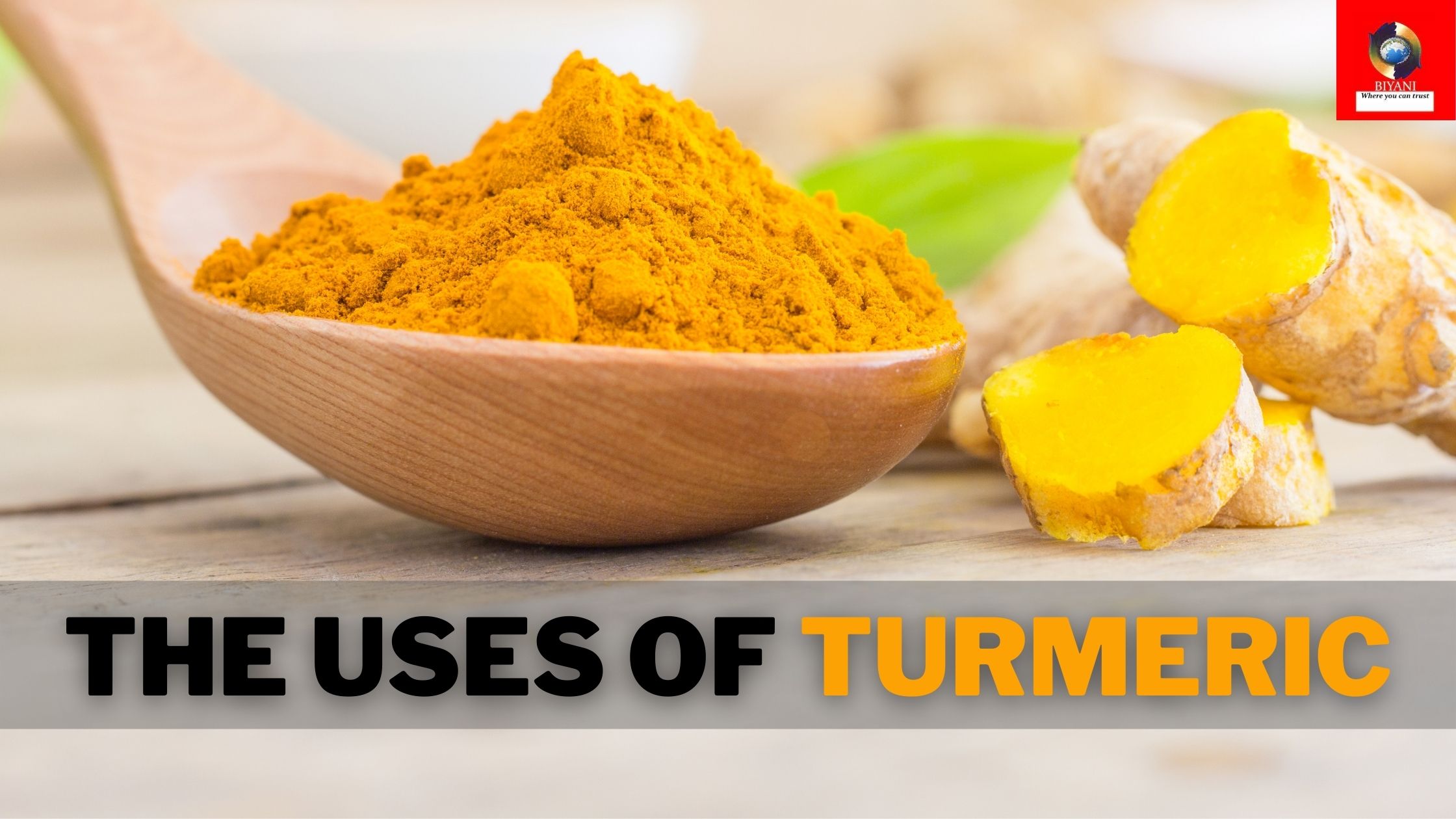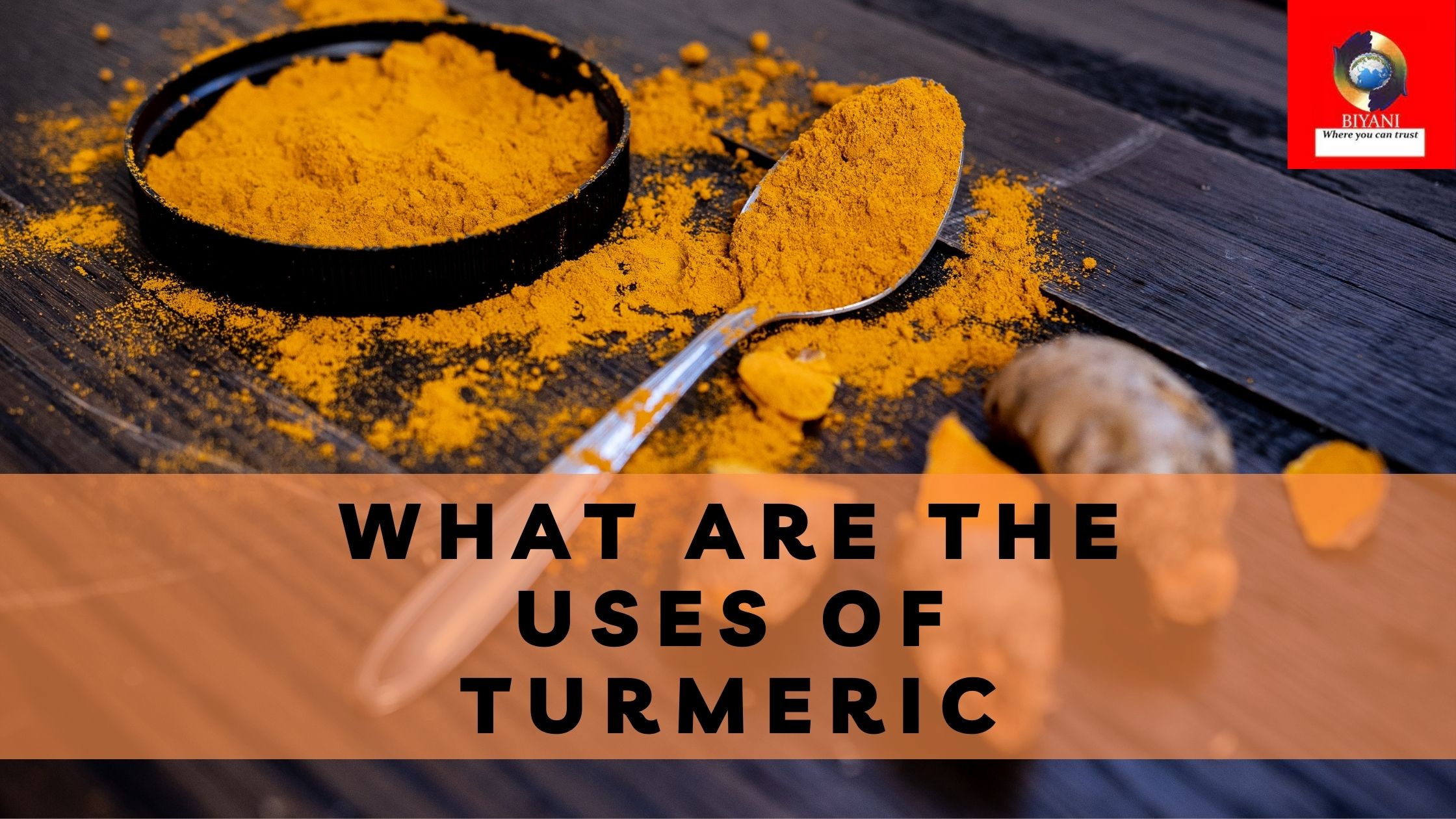INTRODUCTION
Hey there, I hope you are doing well. Generally, everyone knows about turmeric and its taste. But, do you know about its uses? In this blog, you are going to read ‘about turmeric’ and the ‘types of turmeric’. In addition, you’ll read about the ‘characteristics of turmeric’ and ‘the uses of turmeric’.
Let’s get started….
ABOUT TURMERIC
Basically, ‘Haldi’ is the common name for Turmeric. It belongs to the family ‘Zingiberaceae’. On the other hand, its botanical name in binomial nomenclature is curcuma longa.
In general, the useful plant part of turmeric is its rhizome which is an underground part. Identically, people grind the dried rhizome to gain Haldi powder or turmeric powder.
Chiefly, there are some active compounds in Haldi such as curcumin. Moreover, it gives the yellow-orange colour to turmeric. Besides curcumin, some flavonoids, terpenoids, saponins, phenols, glycosides, amino acids, tannins and volatile oils are also present in it.
Therefore, Turmeric/Haldi powder is extensively used in spices & cosmetics. Likewise, people also use it as a colouring agent and as medicine.
TYPES OF TURMERIC
Certainly, there are several types or varieties of turmeric/haldi.
Some are as follows:
Lakadong
This amazing spice is found in lakadong village. As a result, the villagers kept its name after the name of the village. Most importantly, people consider it as the world’s best haldi. As it has a presence of high cucumin content. Usually, there is only curcumin in other types of turmeric. But, in lakhdong haldi, it is
Alleppey
Subsequently, this turmeric is grown in a town called Alleppey at Kerela (the southernmost part of India). Overall, it has an average curcumin percentage. Therefore, it is beneficial as a colouring agent or dye and as a source of medicine.
Erode
In this turmeric, the curcumin percentage is average. Likewise, it has a bright yellow colour and is derived from the Erode local cultivators.
Sangli
Basically, this turmeric grows in Maharashtra. Certainly, it is known to have medicinal properties. Even, it accounts for nearly of the state’s total production of turmeric.
CHARACTERISTICS & THE USES OF TURMERIC
Characteristics of turmeric
- Antibiotic: inhibits the growth of or destroys microorganisms.
- Appetizer: stimulates appetite.
- Antiseptic: capable of preventing infection by inhibiting the growth of infectious agents.
- Anthelmintic: destroys parasitic worms
- Antidiabetic: controls the level of glucose (sugar) in the blood.
- Antioxidant: neutralizes the oxidant effect of free radicals and other substances.
- Antiplatelet: decreases platelets aggregation and inhibits thrombus formation.
- Anodyne: Relieves pain without causing loss of consciousness.
- Antiasthmatic: treats or prevents asthma attacks.

the uses of turmeric
Basically, Turmeric/Haldi is used in many ayurvedic medicines.
Moreover, Turmeric Powder is tonic, stimulant, pungent, bitter, heating, laxative, anthelmintic, vulnerary, alexiteric, and emollient.
Likewise, it is good for the skin and reduces phlegm.
Eventually, Turmeric is useful in a variety of diseases such as:
- Diseases of the blood
- Leukoderma
- Scabies
- Urinary discharges
- Inflammations
- Bad taste in the mouth
- Biliousness
- Dyspepsia
- Elephantiasis
- Snake-bite
- Smallpox
- Swellings
- Boils, Bruises, Sprains, etc.
Thank you for reading our blog. Kindly, share this with the people who are curious to read about turmeric, its types and ‘the uses of turmeric’.
Blog by:
Kanchan Sharma

